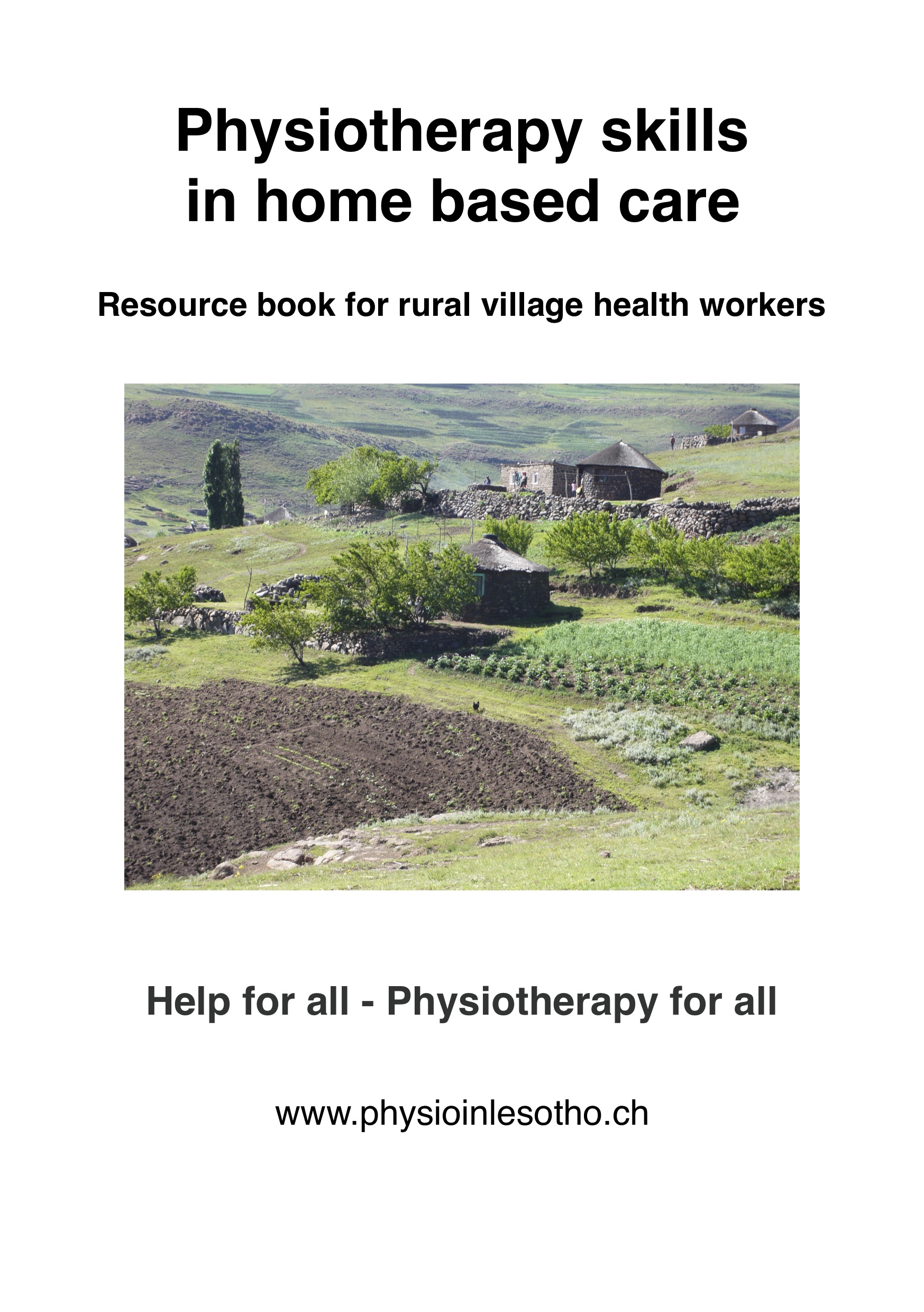Dear Friends
Newsletter 5
Paray Physiotherapy Study Group
With pleasure I present you the 5th newsletter. This time I focus on three topics and include material which can be useful in our everyday work. During our study days we tackled a few times the topic of documentation. Essential questions are: What shall we document? How can we document this information? What can we do with this information? Who benefits from our documentation? Is it the patient, the doctors and nurses, the administration or physiotherapy collegues? To enlight this topic let’s start with two items:
The physiotherapy documentation sheet:
This paper allows to line out a few words what the physiotherapy assistant or physiotherapist assessed on the hospitalized patient, what is the intention of the physiotherapy treatment, and how the treatment is proceeding. Including this information paper in the patients documentation, doctors and nurses can be directly informed and consider our work.
Physiotherapists monthly statistics form:
For the annual report our activity shall be documented in a descriptive way and with precise statistic figures. It has shown to be very practical to reassume the statistics on a monthly basis, so at the end of the year it’s easier to produce the annual figures. Included you find as well this form which you can copy for your own use.
In our next newsletter we will focus on how to write an annual report. The documentation of the physiotherapy service is not only helpful for the physiotherapy staff but it also serves superintendants, matrons and hospital administrators. This instrument enhances the awareness of what the department is offering to the patients.
Finally in this newsletter let’s look at a common herb: Wild Fennel or Lefokotsane. Following there is a detailed description of the herb, its use in physiotherapy and even for your cooking.
In a few weeks time you will receive detailed information about this year physiotherapy workshop in Paray.
I wish you a good time, God bless you. Ntate Thuso W. Fasser
September 2010
Link to documentation sheet
Some useful information of a common herb:
Common name: Wild Fennel Proper name: Foeniculum vulgare
Description
It is a hardy, perennial herb with yellow flowers and feathery leaves.
A highly aromatic and flavourful herb with culinary and medicinal uses.
Erect it grows to a height up to 2.5 m, with hollow stems. The leaves grow up to 40 cm long, they are finely dissected, similar to those of dill, but thinner. The flowers are produced in terminal compound umbels 5-15 cm wide, each umbel section having 20-50 tiny yellow flowers on short pedicels. The fruit is a dry seed from 4-10 mm long, (often mistermed „seeds“). It spreads well by seed and is considered an invasive species and weed in many countries.
Distribution
Wild fennel may be found growing wild in many parts of the world, especially on dry soils near the sea coast, on river banks, along roadsides, in pastures and in other open sites. In Lesotho it is mostly found in the low lands and not seldom in the high lands up to 2500 m.
Culinary uses
The bulb, foliage, and seeds of the fennel plant are widely used in many of the culinary traditions of the world. Dried fennel seed is an aromatic, anise-flavoured spice, brown or green in colour when fresh, slowly turning a dull grey as the seed ages. For cooking, green seeds are optimal. The leaves are delicately flavoured and similar in shape to those of dill. The bulb is a crisp, hardy root vegetable and may be sautéed, stewed, braised, grilled, or eaten raw.
Fennel seeds are sometimes confused with those of anise, which are very similar in taste and appearance, though smaller. Fennel is also used as a flavouring in some natural toothpaste.
In many parts of the world roasted fennel seeds are consumed as an after-meal digestive and breath freshener
Medicinal uses
Fennel is chiefly used medicinally with purgatives to allay their side effects and for this purpose forms one of the ingredients of the well-known compound liquorice powder. Fennel water has properties similar to those of anise and dill water: mixed with sodium bicarbonate and syrup, it is used to ease flatulence in infants; it also can be made into a syrup to treat babies with colic or painful teething. For adults, fennel seeds or tea can relax the intestines and reduce bloating caused by digestive disorders. Fennel tea, also employed as a carminative, is made by pouring boiling water on a teaspoonful of bruised fennel seeds. In the Indian subcontinent, fennel seeds are also eaten raw, sometimes with some sweetener, as it is said to improve eyesight. In ancient times fennel was regarded as the herb of sight.
Some people use fennel as a diuretic and it may be an effective diuretic and a potential drug for treatment of hypertension.
It is well known that fennel is a galactogogue, improving the milk supply of a breastfeeding mother.
Syrup prepared from fennel juice was formerly given for chronic coughs. Fennel is also largely used for cattle condiments. It is one of the plants which is said to be disliked by fleas, and powdered fennel has the effect of driving away fleas from kennels and stables. Plain water drunk after chewing and consuming fennel seeds tastes extremely sweet.
Growing Wild Fennel
It is easy to use the mature fennel seeds and saw them in the medicinal garden. Once growing it sustains even dry seasons.
Harvesting and drying Wild Fennel
Harvest the seeds when they are mature and already dry. You can use them as seeds next year or keep them dry in a tinbox for tea or for cooking. The same you can do with the leaves or the finely sliced stems after having them dried on a shadowy place.
Attention
Many species in the family Apiaceae are superficially similar to fennel, and some, such as poison hemlock are toxic. It is therefore unwise, and potentially extremely dangerous, to use any part of any of these plants as a herb or vegetable unless it can be positively identified as being edible.
Dill, coriander and caraway are similar-looking herbs but shorter-growing than fennel, reaching only 40–60 cm; dill has thread-like, feathery leaves and yellow flowers; coriander and caraway have white flowers and finely divided leaves (though not as fine as dill or fennel) and are also shorter-lived (being annual or biennial plants). Hemlock tends to grow near water or in consistently moist soil, is tall (0.75-2m), has purple blotches on the main stem, and is heavily branched with small umbels of white flowers. A useful test to distinguish between it and fennel is to crush some leaves and smell them. Fennel smells like anise or liquorice, whereas the smell of poison hemlock is often described as mouse-like or musty. But take care: coniine, a toxin contained in poison hemlock, can be absorbed through the skin, so do not do this “smell test” with bare hands (and avoid touching your eyes or mouth) unless you can wash them immediately afterwards.


